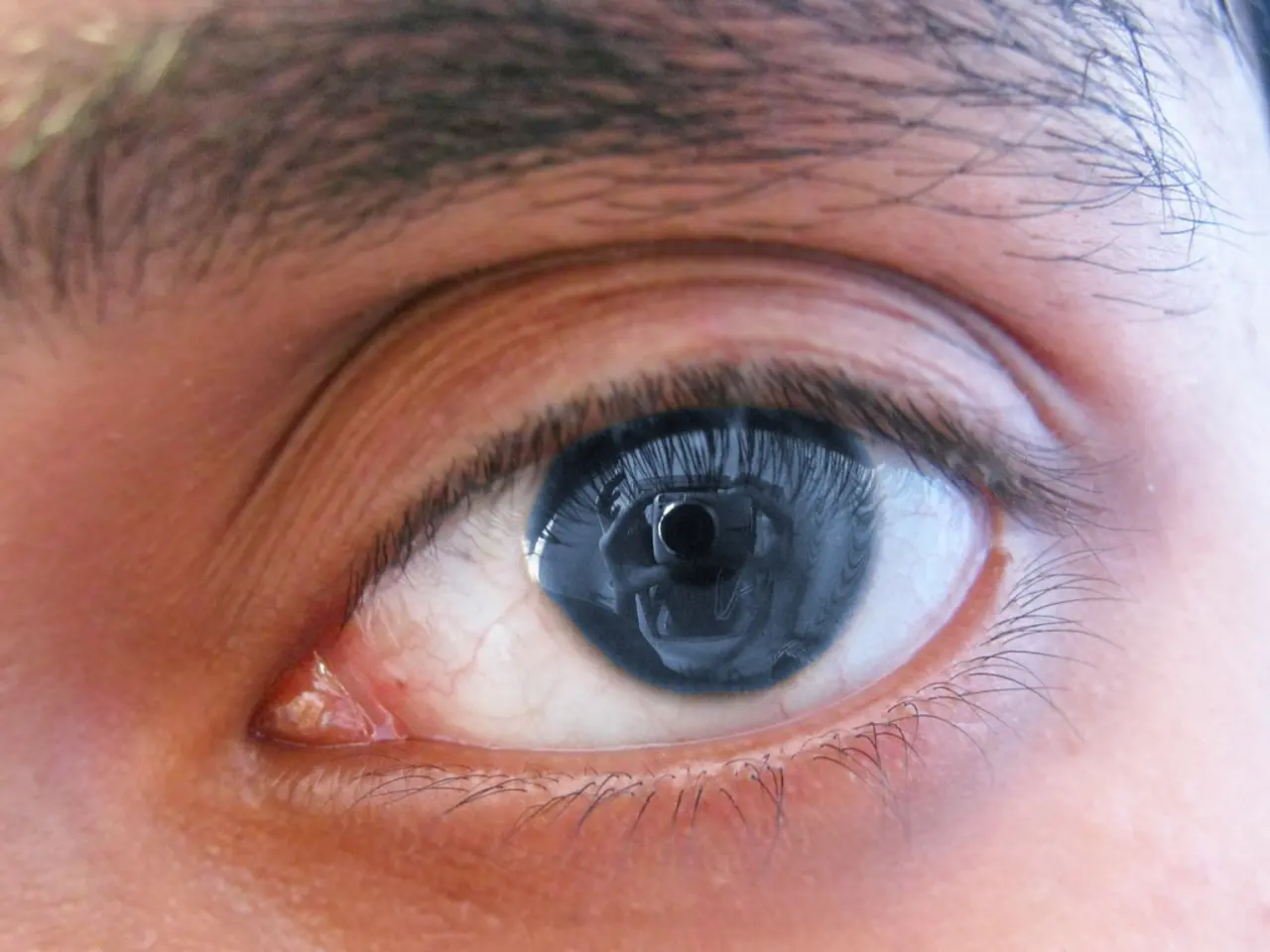Managing Diabetic Retinopathy: Current and Emerging Treatment Options
Can diabetic retinopathy be reversed?
Diabetic retinopathy is an eye condition caused by prolonged periods of hyperglycemia, a condition associated with diabetes. This irreversible eye condition can lead to blindness if left untreated. However, there are several current and emerging treatment options that can help manage and potentially slow the progression of the condition.
Current Management Options
Early intervention with lifestyle modifications such as managing blood sugar levels, maintaining a healthy diet, and exercising regularly can help slow the progression of diabetic retinopathy[1]. Anti-vascular endothelial growth factor (VEGF) therapies are commonly used to treat diabetic macular edema by reducing fluid buildup in the retina[5]. Laser photocoagulation can help reduce the risk of vision loss by treating leaking blood vessels and reducing edema[5]. Steroid implants like dexamethasone implants can reduce inflammation and improve retinal health[2].
Emerging Therapies
Research is ongoing to find more effective and convenient treatments for diabetic retinopathy. GLP-1 Receptor Agonists (GLP-1 RAs) are medications primarily used to treat diabetes but have shown potential in reducing the risk of sight-threatening diabetic retinopathy complications[1][4]. Senolytic therapies are being explored for their potential to target and eliminate senescent cells, which contribute to diabetic retinopathy progression[5]. PER-001 Endothelin-1 Receptor Antagonist is an experimental treatment that aims to address vascular and inflammatory challenges in retinal conditions[2]. Annexton Pharmaceuticals' ANXV is undergoing Phase 2a studies to explore its potential in treating diabetic retinopathy[3].
Understanding Diabetic Retinopathy
Diabetic retinopathy occurs when high blood sugar levels weaken and damage the delicate blood vessels present in the retina, causing them to bulge, swell, leak fluids, and blood[6]. This condition can be classified into two types: nonproliferative diabetic retinopathy (NPDR) and proliferative diabetic retinopathy (PDR). In more advanced cases, new, atypically fragile blood vessels may form to compensate, but they are prone to leaking and can further exacerbate the condition and impair vision[6]. Anti-VEGF medications can help reduce the growth of atypical blood vessels and swelling within the retina[5]. In severe cases, a vitrectomy may be recommended to remove blood and scar tissue in the eye and replace it with a clear fluid to hold the retina in place[6].
Regular eye examinations are recommended for individuals with diabetes to detect and manage any eye problems early[7]. Individuals with diabetes need to have a comprehensive eye exam at least once annually to identify any issues early on and enable timely intervention[7]. By managing blood sugar levels, blood pressure, cholesterol levels, quitting smoking, and undergoing regular eye exams, a person living with diabetes can take several steps to prevent diabetic retinopathy[8].
[1] American Diabetes Association. (2021). Diabetes Care. [Online] Available at: https://care.diabetesjournals.org/
[2] Allergan. (2021). ILUVIEN. [Online] Available at: https://www.iluvien.com/
[3] Annexton Pharmaceuticals. (2021). ANXV. [Online] Available at: https://annextonpharma.com/anxv/
[4] Diabetes UK. (2021). Diabetes and Retinopathy. [Online] Available at: https://www.diabetes.org.uk/guide-to-diabetes/complications/eye-complications/retinopathy
[5] National Eye Institute. (2021). Diabetic Retinopathy. [Online] Available at: https://nei.nih.gov/healthyeyes/diabetic/retinopathy
[6] Mayo Clinic. (2021). Diabetic Retinopathy. [Online] Available at: https://www.mayoclinic.org/diseases-conditions/diabetic-retinopathy/symptoms-causes/syc-20355114
[7] American Academy of Ophthalmology. (2021). Diabetic Eye Disease. [Online] Available at: https://www.aao.org/eye-health/diseases/diabetic-eye-disease
[8] Diabetes UK. (2021). Preventing Diabetic Retinopathy. [Online] Available at: https://www.diabetes.org.uk/guide-to-diabetes/managing-your-diabetes/taking-care-of-yourself/looking-after-your-eyes
- Effective management of type 2 diabetes, often involving lifestyle modifications like proper nutrition, fitness, and exercise, can potentially slow the development of diabetic retinopathy.
- A naive attempt to ignore diabetes and its associated conditions, such as diabetic retinopathy, could lead to blindness if not treated promptly.
- In addition to sight-threatening complications, chronic diseases like diabetes and chronic kidney disease also pose a risk to mental health and overall well-being.
- Anti-VEGF therapies are a common treatment for diabetic macular edema, which is caused when high blood sugar levels damage retinal blood vessels.
- Aside from therapeutic interventions, workplace wellness programs can play a crucial role in managing medical conditions like diabetes by promoting healthy lifestyles within the workplace.
- While they're primarily used to treat diabetes, GLP-1 RAs have shown promise in reducing the risk of sight-threatening complications associated with diabetic retinopathy.
- Skin care becomes essential for people with diabetes due to the increased risk of skin conditions and infections caused by high blood sugar levels and low circulation.
- The science behind diabetic retinopathy continues to evolve, with new therapies like senolytic therapies being explored to treat the condition more effectively.
- Proper treatment and management of chronic diseases like diabetes, such as eye health assessments and managing medical conditions under Medicare, are essential for maintaining good health and wellness.
- Living with diabetes requires ongoing attention to various facets of health and wellness, from nutrition and fitness to mental health and diabetes-related complications like diabetic retinopathy.
- Besides diabetic retinopathy, other eye health concerns may also occur in people with diabetes, such as cataracts and glaucoma, emphasizing the importance of regular eye exams for diabetes management.




